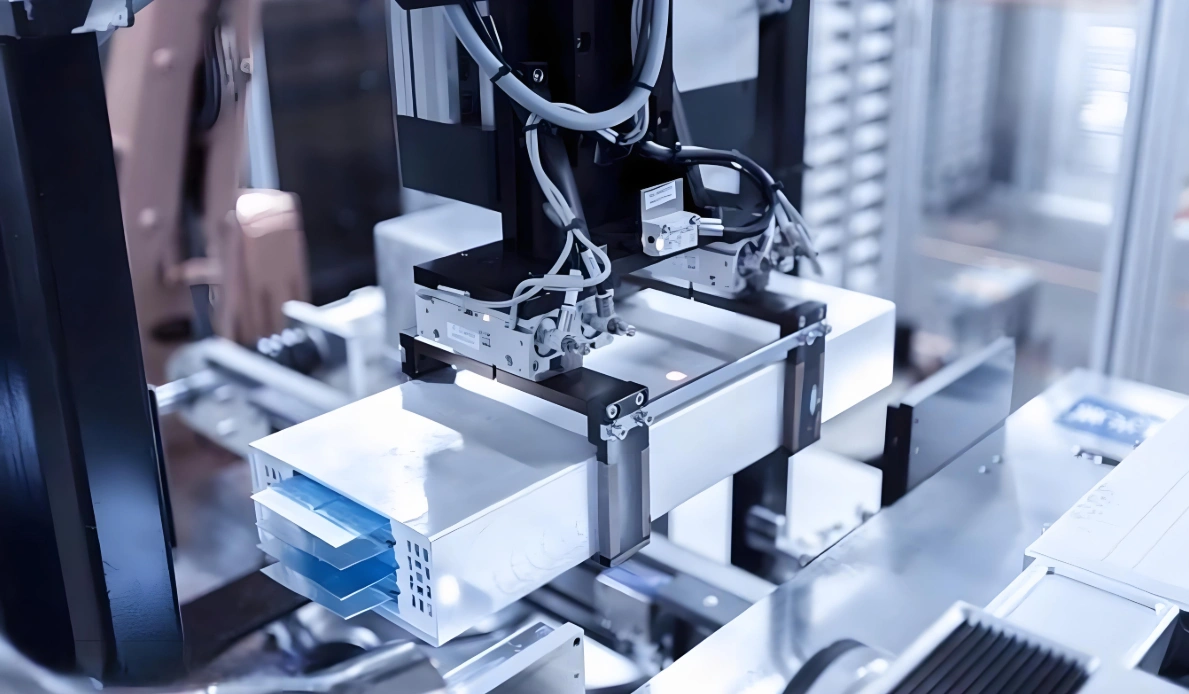Jak funguje systém tepelného managementu v bateriových systémech pro ukládání energie?
Úvod
S rostoucím výkonem a kompaktností systémů pro ukládání energie z lithiových baterií (BESS) se řízení produkce tepla stává kritickou výzvou. Bez účinné tepelné regulace hrozí systémům snížení výkonu, zkrácení životnosti a v nejhorším případě i tepelné vyčerpání. Tento článek se zabývá fungováním systému tepelného řízení v moderních bateriových systémech, zejména v průmyslových a komerčních aplikacích pro ukládání energie.
Pro zajištění optimální bezpečnosti a účinnosti jsou systémy tepelného managementu v bateriových úložištích více než jen volitelným doplňkem - jsou nezbytné.
Proč je tepelný management pro bateriové systémy kritický?
Během nabíjení a vybíjení baterie produkují teplo v důsledku vnitřního odporu. Pokud teplota překročí bezpečné limity, vzniká několik rizik:
-
Zkrácená životnost baterie: Zvýšené teploty urychlují stárnutí buněk.
-
Nerovnoměrná degradace: Nestejné teploty v jednotlivých modulech mohou vést k nevyváženému výkonu.
-
Bezpečnostní rizika: Přehřátí může vést k tepelnému úniku nebo požáru, zejména při rozsáhlém nasazení.
Z těchto důvodů je účinné systémy tepelného řízení baterií mají zásadní význam pro komerční, průmyslové a komunální instalace BESS.
Jaké jsou hlavní typy systémů tepelného řízení baterií?
Řešení tepelného managementu se liší v závislosti na rozsahu systému, hustotě energie a prostředí instalace. Mezi hlavní typy patří:
Chlazení vzduchem
Vzduchové systémy se spoléhají na konvekci a ventilátory, které odvádějí teplo z buněk. Je jednoduchý a cenově výhodný, ideální pro nízkou spotřebu nebo použití v domácnostech, ale má omezený výkon.
Kapalinové chlazení
Kapalinové chladicí systémy využívají k absorpci a přenosu tepla chladicí kapalinu (obvykle vodu nebo směs glykolu). Díky své vynikající tepelné vodivosti a teplotní rovnoměrnosti se hojně používají v systémech bateriových úložišť v racku a v komerčních aplikacích s vysokou hustotou.
Materiály s fázovou změnou (PCM)
PCM absorbují teplo fázovou přeměnou (např. z pevné látky na kapalinu) a pasivně regulují teplotu. Často se používají v kompaktních bateriových modulech nebo přenosných zařízeních.
Termoelektrické chlazení
Tyto systémy, založené na Peltierově jevu, nabízejí přesnou regulaci teploty, ale jsou energeticky náročné a drahé, takže se ve velkých BESS používají méně často.
Jak funguje kapalinový chladicí systém v rackovém BESS?
V komerčních úložištích energie s vysokou hustotou poskytuje kapalinové chlazení bateriových systémů konzistentní a účinnou tepelnou regulaci. Funguje to takto:
-
Průtok chladicí kapaliny: Čerpadla zajišťují cirkulaci chladicí kapaliny v kanálech zabudovaných v bateriových modulech.
-
Výměna tepla: Teplo absorbované z baterie se přenáší do výměníku tepla a odvádí se.
-
Monitorování teploty: Senzory přenášejí údaje o teplotě v reálném čase do systému BMS a EMS.
-
Dynamické řízení: Úrovně chlazení se upravují podle zatížení systému a podmínek prostředí.
Tato konfigurace je ideální pro průmyslové aplikace skladování baterií, které vyžadují stálou provozuschopnost a vysoké bezpečnostní standardy.
Jaké jsou problémy s tepelným managementem u velkých ESS?
Navzdory výhodám je při navrhování a implementaci tepelných systémů v BESS v užitkovém měřítku třeba čelit několika výzvám:
-
Tepelná rovnoměrnost: Zajištění jednotné teploty ve všech modulech je obtížné, zejména ve velkých systémech.
-
Složitost systému: Více komponent (čerpadla, potrubí, senzory) znamená vyšší náklady na integraci.
-
Spotřeba energie: Chladicí systémy spotřebovávají energii, což ovlivňuje celkovou účinnost.
-
Údržba a spolehlivost: Únik chladicí kapaliny nebo poruchy snímačů je třeba pečlivě zmírnit.
K řešení těchto problémů se mnozí poskytovatelé řešení, včetně PKNERGY, nabízejí bateriové systémy na míru s integrovanou tepelnou regulací, které odpovídají specifickým potřebám a klimatickým podmínkám.
Jak je tepelný management integrován do systému správy baterií (BMS)?
Pokročilé platformy BMS spolupracují s tepelnými systémy a zajišťují ochranu a účinnost v reálném čase:
-
Monitorování: Systém BMS nepřetržitě monitoruje teplotu na úrovni buňky/modulu.
-
Ochrana: Prahové hodnoty překročení teploty spouštějí chladicí mechanismy nebo vypnutí systému.
-
Kontrola: Dynamické vyrovnávání zátěže na základě tepelných dat zajišťuje stabilitu výkonu.
-
Integrace s EMS: Systém řízení spotřeby energie upravuje provozní strategie na základě teploty, zatížení a předpovědi počasí.
Inteligentní integrace BMS a EMS v bateriových úložištích energie umožňuje prediktivní údržbu a optimální provoz.
Závěr
Řízení tepla není jen bezpečnostní mechanismus - je to faktor, který zvyšuje výkonnost moderních systémů pro ukládání energie. Ať už se jedná o vzduchové, kapalinové nebo fázové metody, účinná regulace tepla prodlužuje životnost baterií, zlepšuje návratnost investic a zajišťuje spolehlivý provoz.
Ve společnosti Pknergy se specializujeme na navrhování vlastních bateriových systémů pro ukládání energie s pokročilým tepelným managementem. Naše řešení kombinují inženýrské znalosti se znalostmi reálného použití, aby splňovala jedinečné požadavky každého projektu.
Kontaktujte nás ještě dnes a prozkoumejte správné tepelné řešení pro vaše potřeby skladování energie.
Úspora peněz, ochrana životního prostředí
PKNERGY vám pomůže snížit účty za energii pro váš dům solární skladování energie, ukládání solární energie pro použití kdykoli - v noci nebo během výpadku.






